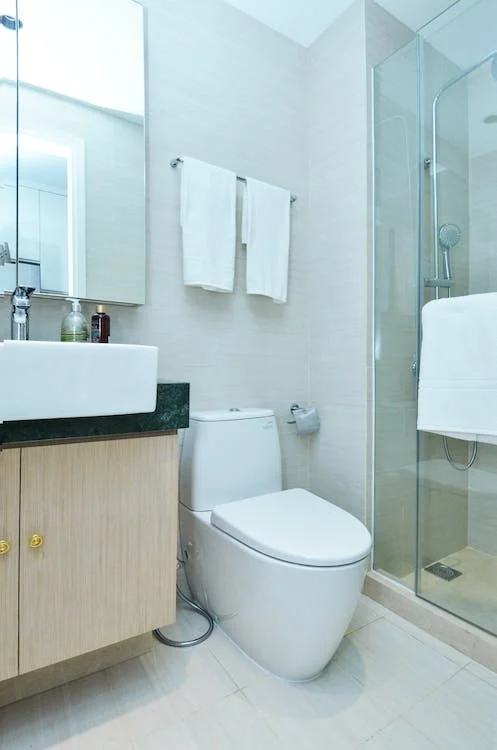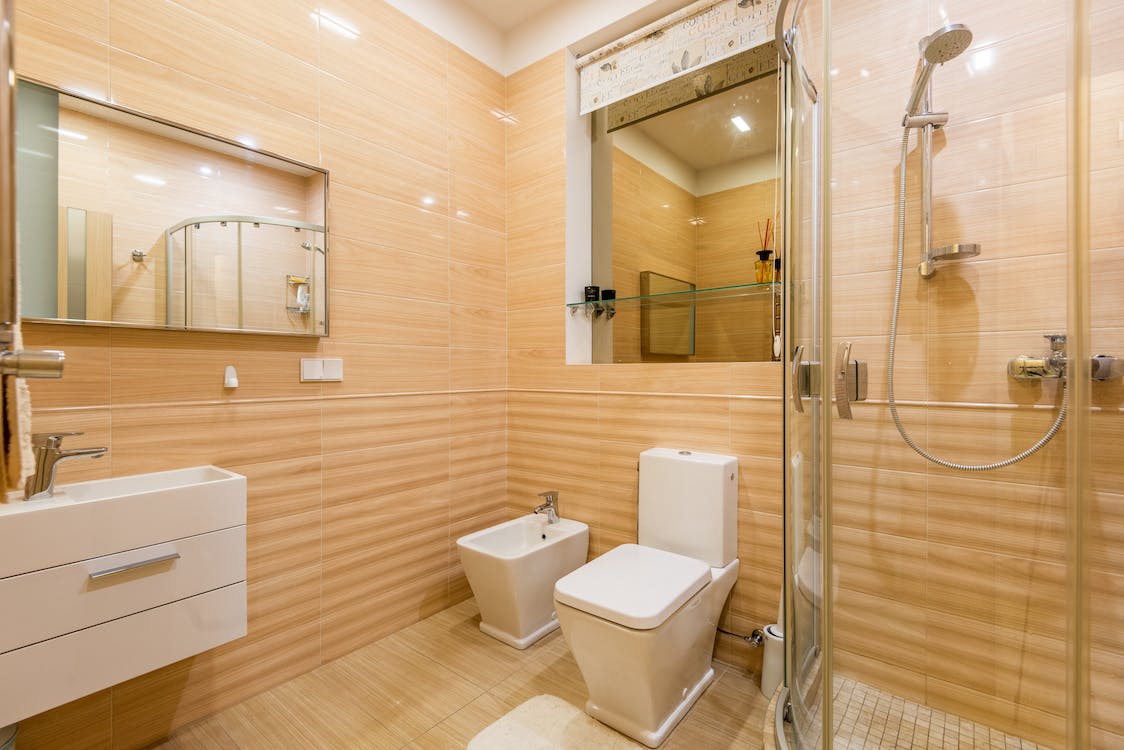The toilet is one of the few elements in the house that gets a lot of use. We often take them for granted, but surely, a home is not comfortable without one. That’s why when you’re building a house or renovating a bathroom, take time to decide on which toilet to invest on, and what kind of toilet will be worth it in the long run.
Toilets have developed over the centuries, and now it is available in different styles, designs, functions, and capabilities. Here are the four most popular types of toilets for residential settings:
1. Two-piece toilets
The most common type of toilet installed in houses, a two-piece toilet consists of a separate tank (cistern) and bowl. These main pieces are attached to each other before or during installation. It is easy to install because you can deal with the tank and bowl separately, making it less bulky and easier to handle. Also, when one piece breaks and needed to be repaired, you only have to deal with one part without needing to replace the whole toilet.
Generally, two-piece toilets are not that difficult to clean, but the joint is where the tank joins the bowl can be a problematic area because it can be a breeding ground for dirt, grime, mold, and bacteria if left unclean over a period of time. Also, there is a risk of leaks between the tank and the bowl if not installed properly. When the rubber gasket that seals the tank starts to deteriorate after years of use, water will leak and you will need to replace it.
Two-piece toilets are a more traditional style of toilets, but because they are around much longer, more homeowners trust this format so they are still selling bigtime. This is why these are cheaper than the other types of toilets listed here. Be sure to look for the best two-piece options at toiletrated.com.
2. One-piece toilets
Unlike two-piece toilets, the one-piece variety is crafted from a single piece of ceramic, so both the bowl and tank are integrated. This seamless design makes a better aesthetic for any modern home with contemporary bathrooms. This also makes it more hygienic and easier to clean, since there is no joint or gaps between the tank and the bowl. From an engineering point of view, it is more durable than the two-piece toilet because there are no joining parts to maintain.
A one-piece toilet can be a challenge to install because of its heavy weight. But once it is secured to the toilet flange, the job is almost done. Also, when something breaks in the toilet, you can’t replace just one part, unlike the two-piece toilet. Once the porcelain is broken, you need to replace the whole toilet.
Generally, one-piece toilets are easier to maintain, since you won’t have to worry about water leaking out of the tank. It’s also more ideal for smaller bathrooms because they occupy less space and sits closer to the floor. One-piece toilets are also more expensive compared to two-piece toilets but are relatively affordable nowadays for most consumers.
3. Wall-hung toilets
If you’re really short on bathroom space, a wall-hung toilet is an ideal choice. Unlike one- and two-piece toilets that are mounted on the floor, these are mounted on the wall. The tank is hidden on the wall and only the bowl and the flush plate could be seen. These are sleek, space-saving toilets that can be installed at a custom height to accommodate a range of statures. Wall-hung toilets offer a more modern design that looks great for bathroom remodels. Because the toilet bowl is hung, the floor beneath it is clear, making it easier to clean up the bathroom floor.
But the nature of the design doesn’t come without a cost. Wall-hung toilets need invasive and intensive installation because you have to tear up a bathroom wall to place the tank and add support to the bowl itself. Also, when something needs to be fixed, most homeowners need to hire professional plumbers because of its design. If you’re also planning to install this to an older house, you may need to rework the studs to put them in the proper place for the carrier.
But even with the cost, wall-hung toilets are now becoming popular because of its modern and simplistic design. Installing this type of toilet will even improve the value of your home
4. Smart toilets
If you’re looking for the most advanced toilet upgrade, consider smart toilets. If you’re already adopting smart home technology, why not adopt it in your bathroom also? Smart toilets are the coolest, most functional and comfortable toilets in the market right now. Besides flushing, they have additional features that can redefine your toilet rituals.
Smart toilets flush automatically without being touched to prevent the spread of germs. These toilets have a smart sensor that activates the flushing mechanism, which works either when a body has moved away from the toilet or when a hand waves in front of the sensor. These toilets also save water, as they sense just the right amount of water needed to flush the waste. Some also have these built-in bidet systems that have front and rear water cleansing options for the user, and you can even set the water temperature and water pressure! Besides these features, here are some additional features that a smart toilet can do:
- Hands-free lid
- Air dryer
- Heated seating
- Foot warmer
- Remote control/touchscreen remote
- Self-cleaning features
- Self-deodorizer
- Nightlight
- Emergency flushing system for blackouts
- Built-in sensors that alert if something is wrong with the tank
- Bluetooth and MP3 capabilities for playing music while you go
Not all smart toilets can do all these things, but it’s good to know how comfy a toilet can be!
5. Composting Toilets
Transitioning to an eco-friendly lifestyle? Composting toilets might be just what you’re looking for. These toilets are a sustainable choice, turning human waste into compost that can nourish the soil. It’s an organic approach to waste management that reduces water use and gives back to the environment.
For a detailed breakdown of how these systems work and their benefits, check out this complete guide on composting toilets.
Unlike traditional toilets, composting toilets don’t use water for flushing. Instead, they use a combination of materials like sawdust, coconut coir, or peat moss to break down waste. Over time, this waste turns into compost that can be safely returned to the earth. While they’re mostly popular among off-grid communities and eco-conscious homeowners, their benefits are gaining broader appeal.
Here are some key features of composting toilets:
- Waterless Operation: No need for plumbing or water connections. It’s especially handy for remote areas without access to water.
- Low Odor: When managed correctly, composting toilets produce minimal odor, thanks to proper ventilation systems.
- Eco-friendly: By transforming waste into compost, these toilets reduce the strain on sewage systems and promote sustainable agriculture.
- Space-Saving: Ideal for tiny homes, RVs, boats, or cabins where space and plumbing can be an issue.
- Portable Options: Some models are lightweight and easy to move, making them suitable for temporary setups or travel.
- Low Maintenance: With regular check-ins and the occasional addition of composting materials, they’re relatively low fuss.
- Cost-Efficient: Over time, they can save money by cutting down on water bills and sewage fees.
While composting toilets are fantastic for the environment, they might not be for everyone. It takes commitment to manage and maintain them. However, for those passionate about sustainability, they offer a great way to make a direct positive impact on our planet.
Also in this article, you have;
Wall-hung toilets; You do not have the number “3” highlighted. I’m not sure it’s a big difference, but it caught my eye.



